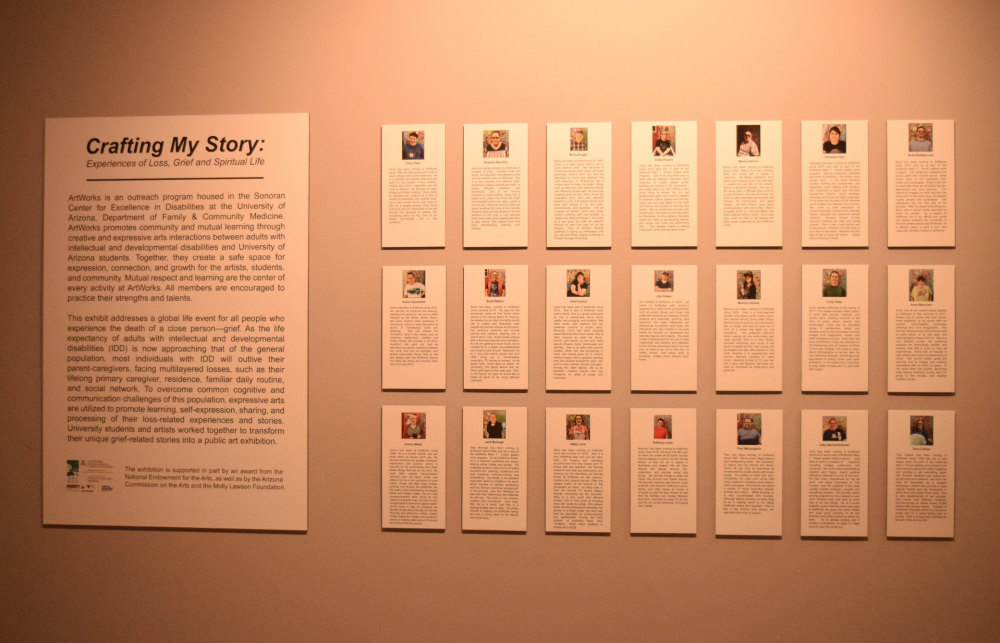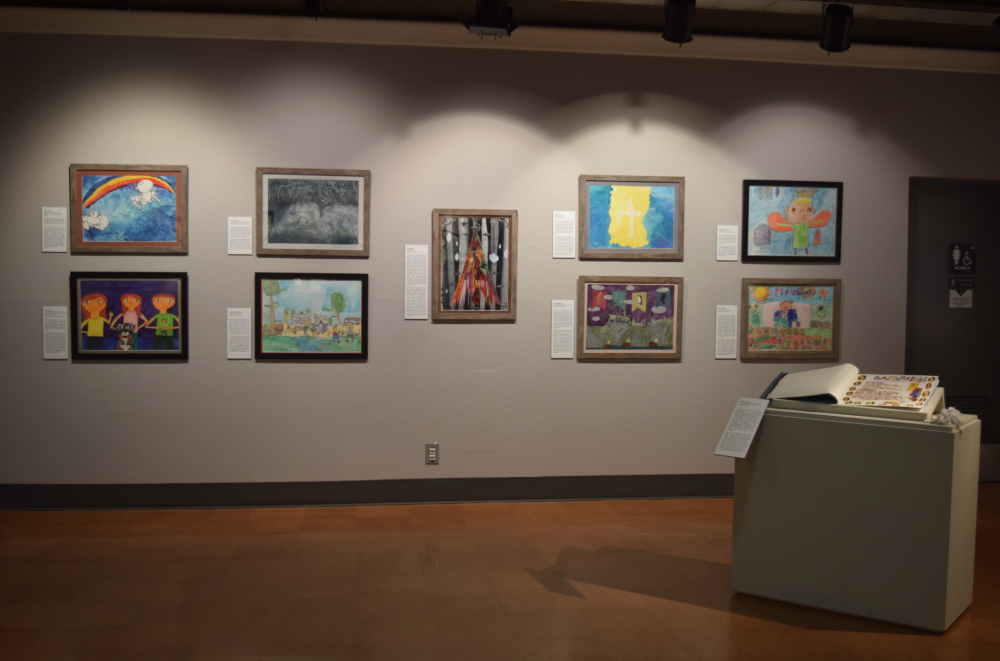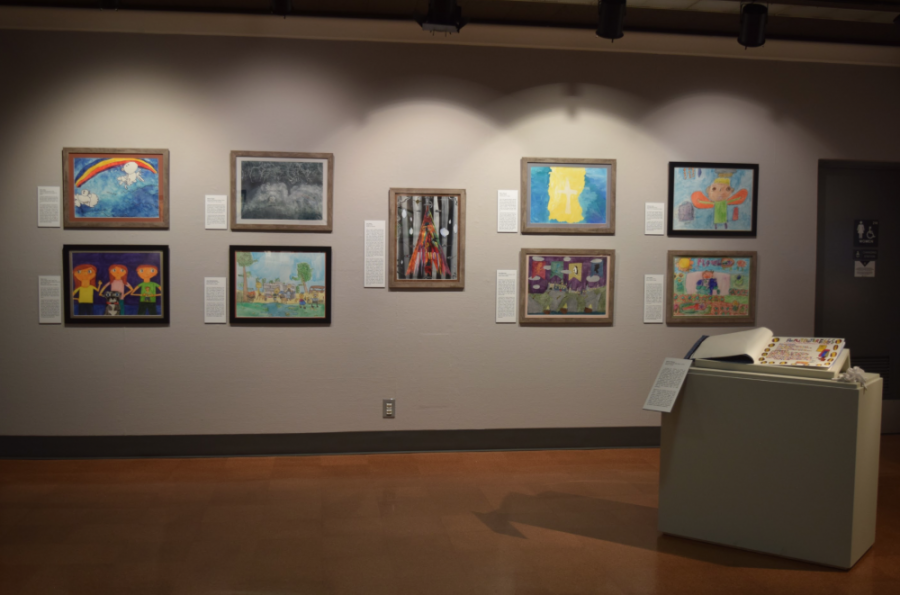Together with ArtWorks, the University of Arizona Museum of Art is hosting an art exhibition chronicling the universal human feelings of loss and grief titled “Crafting My Story: Experiences of Loss, Grief and Spiritual Life.”
The exhibit began Sept. 7 and remains until Jan. 12, 2020 on the second floor of the UAMA and features 22 works of art.
According to ArtWorks director Yumi Shirai, all pieces were created by adults older than thirty who have intellectual and developmental disabilities, or IDD, and who worked together with UA students through ArtWorks — an on-campus program in the Sonoran Center for Excellence in Disabilities.
Through the program, the artists with IDD spent ten weeks learning about grief-response and using it for their art, Shirai said. Their final creations tell stories about their own journeys with loss.
“In our folks, we have disenfranchised grief,” Shirai said. “Their grief is buried down, not acknowledged or is even denied. It’s not clearly described how we can support them.”
As the director at ArtWorks for 21 years, Shirai has completed training in grief counseling. She saw the need for it in the adults at ArtWorks and was inspired to obtain this experience.
According to ArtWorks, when suddenly faced with “the global life event … grief,” those with IDD are often unprepared.

Traditional grief counseling is built on the assumption that everybody is literate and able to speak, according to Shirai. Individuals with IDD have impairments in these fields, so such techniques do not work for them. The grief counseling field is missing tools for individuals who do not fit that precise mold.
“We did this exhibit because we wanted to show their capacity and also their need [for this type of grief support],” Shirai said.
Each work in the exhibit is an expressive story and provides a window into each artist’s in-depth process and journey through grief.
RELATED: University of Arizona art professor recognized in The New York Times
The artists
Like grief, each piece was unique and personal to the artist’s journey. ArtWorks Artist Jon Green used dreamlike forms and distorted figures to display these emotions in his artwork.
“When my dad passed, I experienced overwhelming grief,” Green said in his artist’s bio at the exhibit. “I had episodes when I felt my dad’s presence, and I had never had that with other people. This happened so much that I had to call my mom and let her know that I had felt my dad in the house.”
According to the description about the exhibit, individuals with IDD are living longer than they have in the past. With this longer life expectancy comes the reality that they are increasingly outliving their parents, primary caregivers and other comforting faces.
They also experience multilayered losses, like their familiar daily routine, social network and residence when the passing of a loved one occurs. Oftentimes, they are confused with how to cope when someone passes away, according to Sheila Hollins’ article “Managing Grief Better: People with Intellectual Disabilities.”
Of the contributing ArtWorks artists, 6 of the 21 collaborated with students from the UA by sharing their grief stories and then working together on the creative process, according to Shirai. Students met with the artists for six weeks, 45 minutes a week. Each artist was paired with three or four students.
“The students helped to synthesize the pieces of information [from each story] together,” Shirai said. “[The artists] have the ability to do so in art while using words is very difficult.”

A word from the curator
“One of the powers of this exhibition is that we traditionally have this way of othering how we relate to others. We put ourselves in boxes of how we’re different from other people,” said Chelsea Farrar, the UAMA curator of community engagement. “ArtWorks artists, as adults with intellectual and developmental disabilities, are a prime example of groups that have just been othered. We kind of infantilize that community of individuals, [yet] they’re having those same kinds of profound emotional reaction to the things that all of us have to experience at one point in our lives. Whether it’s a pet, a family member or their lifetime caregiver.”
For the UA students, working with the artists also helped them to redefine the ways in which they themselves go about processing grief. The concept of grief became a positive discussion and celebration by the end of the six-week collaboration.
“The students really learned from our artists. Our artists are in their 30s through 50s, so they’re matured in terms of life experiences compared to college students,” Shirai said. “It opened up how students perceive death and grief and also permitted them to talk about it in different ways.”
This is UAMA’s second time working with ArtWorks. Both the 2016 show and the current exhibition have been well-received and Farrar is proud and honored to be hosting “Crafting My Story.”
“[The show] connects us in these shared experiences and makes us realize that we’re more alike than we are different,” Farrar said.









